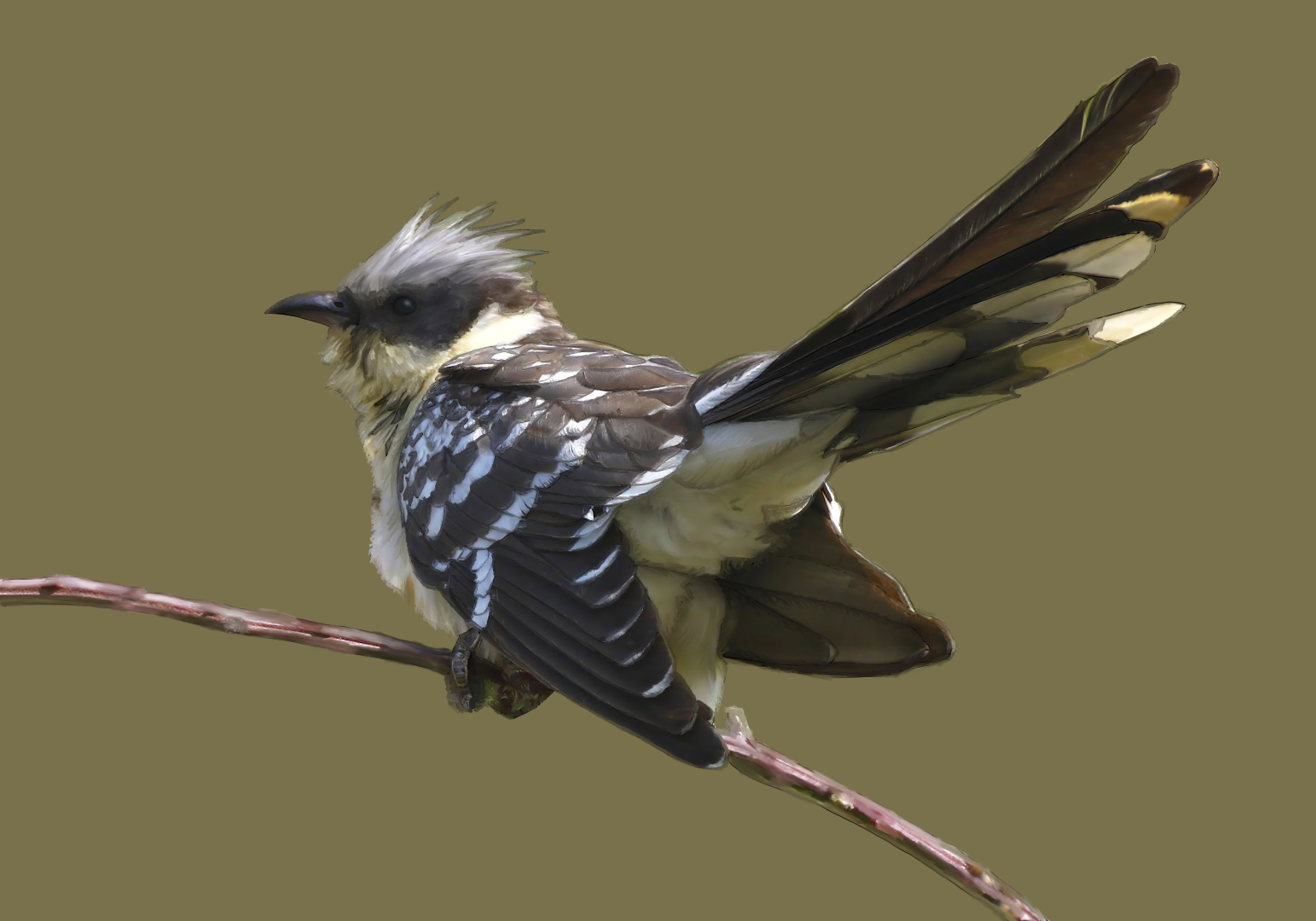Great Spotted Cuckoo Clamator glandarius

Great Spotted Cuckoo (computer-generated image by Colin R Casey).
Just two county records: an immature bird in May 1971 at Anderby Creek and an adult in July 1974 at Donna Nook. With 48 accepted British records 1950-2018 this species averages about one record per year. In western Europe they nest regularly only in Portugal, Spain and western Italy, wintering in Africa. Most are sub-adults overshooting north in spring while juveniles wander from Europe in late summer and autumn. There is a geographical bias to records towards the south and south-west in spring (February-May) and towards the east coast in autumn (July-October).
| Site | First date | Last date | Count | Notes |
| Anderby Creek | 09/05/1971 | 1 | Immature bird, 15th British record. | |
| Donna Nook | 01/07/1974 | Adult |
Finder’s report: Great Spotted Cuckoo at Anderby Creek, May 9th, 1971, first county record.
by K. Atkin.
Note: account taken from the original BBRC submission. BBRC noted that two in one year is distinctly unusual and that with these two there had been ten since 1956.
Circumstances
As I was walking along the dunes north of Anderby Creek, a large, pale brown, spotted Magpie-like bird flew across the dunes from the seaward side about 50 yd. in front of me and dropped into an area of low bushes out of sight. From the brief view I had, I suspected it could only be a Great Spotted Cuckoo and tried to approach the area where it landed without being seen. I managed to do this and from about 50 ft. found it perched on a dead Elder bush and confirmed my identification. It sat on the bush for about 2 minutes and then, obviously aware of my presence, flew about 10 yd. to another dead bush where it commenced to preen. I decided to get a bit closer and took a description from about 40 ft. away.
Description
Size – larger then (Common) Cuckoo, near the size of a Magpie.
Head – bill was black and noticeably decurved. Crown pale grey and slightly crested horizontally. Black line through eye and blackish ear coverts contrasting with pale crown and bright creamy-yellow cheeks and sides of neck, latter extending to, and nearly meeting, on nape, only separated by a narrow black line. Eyes appeared dark and no eye ring noticed.
Mantle – greyish-brown.
Wings – brown and wing coverts basically paler brown boldly tipped with large buffish spots extending on to the scapulars. Primary coverts with large amounts of white. Tips of flight feathers pale but not co boldly spotted on wing coverts. In flight wings broader than (Common) Cuckoo’s. Flight slow and wing coverts appearing very pale, spots forming a nearly complete white patch on the bend of the wing.
Tail – long, very graduated, dark brown with noticeably white tip when closed. Spread to nearly 1800 when preening and feathers with large whitish spots at tips and outer edges except, apparently, central pair which appeared to have no pale spots. In flight, tail long and graduated like Magpies.
Underparts - creamy-white becoming white on undertail coverts.
Legs – not seen.
I went to get my camera and inform my friends, and as I walked away it flew past me and settled in the dunes again. Unfortunately I could not find it again about a half an hour later.
(Account as per new Birds of Lincolnshire (2021), included September 2022)

